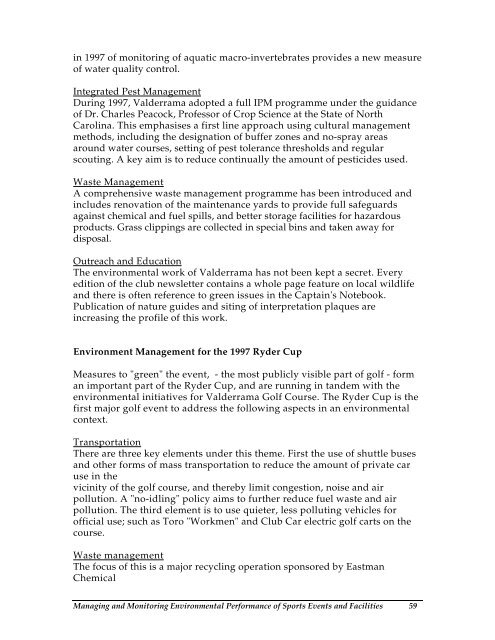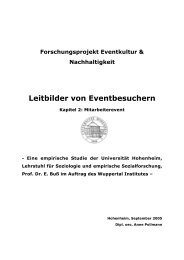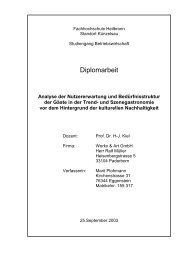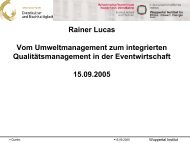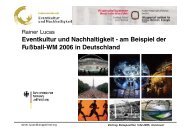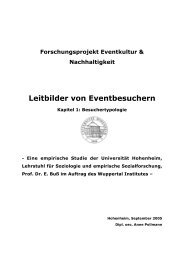environmental management and monitoring for ... - Eventkultur.lab
environmental management and monitoring for ... - Eventkultur.lab
environmental management and monitoring for ... - Eventkultur.lab
You also want an ePaper? Increase the reach of your titles
YUMPU automatically turns print PDFs into web optimized ePapers that Google loves.
in 1997 of <strong>monitoring</strong> of aquatic macro-invertebrates provides a new measure<br />
of water quality control.<br />
Integrated Pest Management<br />
During 1997, Valderrama adopted a full IPM programme under the guidance<br />
of Dr. Charles Peacock, Professor of Crop Science at the State of North<br />
Carolina. This emphasises a first line approach using cultural <strong>management</strong><br />
methods, including the designation of buffer zones <strong>and</strong> no-spray areas<br />
around water courses, setting of pest tolerance thresholds <strong>and</strong> regular<br />
scouting. A key aim is to reduce continually the amount of pesticides used.<br />
Waste Management<br />
A comprehensive waste <strong>management</strong> programme has been introduced <strong>and</strong><br />
includes renovation of the maintenance yards to provide full safeguards<br />
against chemical <strong>and</strong> fuel spills, <strong>and</strong> better storage facilities <strong>for</strong> hazardous<br />
products. Grass clippings are collected in special bins <strong>and</strong> taken away <strong>for</strong><br />
disposal.<br />
Outreach <strong>and</strong> Education<br />
The <strong>environmental</strong> work of Valderrama has not been kept a secret. Every<br />
edition of the club newsletter contains a whole page feature on local wildlife<br />
<strong>and</strong> there is often reference to green issues in the Captain's Notebook.<br />
Publication of nature guides <strong>and</strong> siting of interpretation plaques are<br />
increasing the profile of this work.<br />
Environment Management <strong>for</strong> the 1997 Ryder Cup<br />
Measures to "green" the event, - the most publicly visible part of golf - <strong>for</strong>m<br />
an important part of the Ryder Cup, <strong>and</strong> are running in t<strong>and</strong>em with the<br />
<strong>environmental</strong> initiatives <strong>for</strong> Valderrama Golf Course. The Ryder Cup is the<br />
first major golf event to address the following aspects in an <strong>environmental</strong><br />
context.<br />
Transportation<br />
There are three key elements under this theme. First the use of shuttle buses<br />
<strong>and</strong> other <strong>for</strong>ms of mass transportation to reduce the amount of private car<br />
use in the<br />
vicinity of the golf course, <strong>and</strong> thereby limit congestion, noise <strong>and</strong> air<br />
pollution. A "no-idling" policy aims to further reduce fuel waste <strong>and</strong> air<br />
pollution. The third element is to use quieter, less polluting vehicles <strong>for</strong><br />
official use; such as Toro "Workmen" <strong>and</strong> Club Car electric golf carts on the<br />
course.<br />
Waste <strong>management</strong><br />
The focus of this is a major recycling operation sponsored by Eastman<br />
Chemical<br />
Managing <strong>and</strong> Monitoring Environmental Per<strong>for</strong>mance of Sports Events <strong>and</strong> Facilities 59


